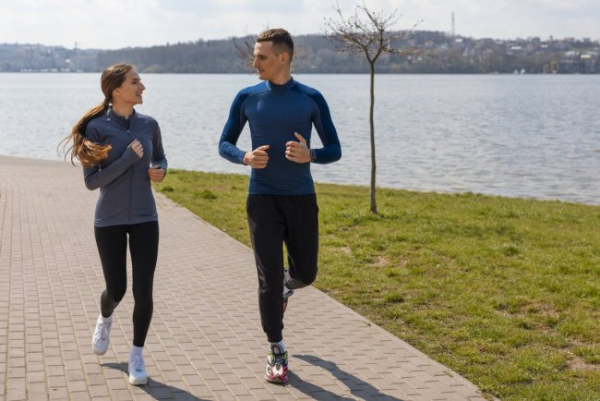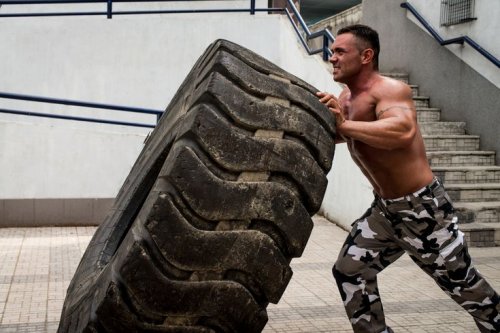
This article's topic is especially relevant for martial arts enthusiasts. On specialized internet resources, questions about specialized physical training (SPT) are common, including questions about developing hand strength in general and strengthening fingers in particular. For some reason, these questions come up more often than others, so let's discuss them…
From experience, I can tell you that, in principle, the necessary muscle groups will develop through regular training… if, of course, you train with dedication. But grip and finger strength in general develop more slowly. Moreover, fingers are often and easily injured in martial arts. The wrists, elbows, and shoulder joints are slightly less common. So, strengthening your hands isn't a goal in itself, but a necessity. And so begin the finger, wrist, and palm push-ups, and the torture of hand resistance bands! Oh yeah, and pull-ups with various grips, including trying to hold on with your fingers—that's probably all that's usually recommended for beginners.
There are so many more ways to train your arms! And they don't just teach strength, but practical skills that can be applied in more than just sports…
Let's start with developing grip strength. And tenacity. Because if anything we're developing will be useful in everyday life, it's the ability to quickly and confidently grab onto something. For example, catching a falling object or grabbing a handrail after losing your balance on public transportation.
For this, two points are being developed:
– the ability to quickly capture and hold;
— the strength itself, primarily of the fingers and wrists.
The first exercise is performed with an object found in every home: a regular jar. The volume (or rather, size) is selected individually, depending on your physical capabilities. Fill the jar… with water, for example. Close it. Grasp the neck with one hand. Using all five fingers, spread your fingers, lift the jar to shoulder level. Lower it… Choose a weight that allows you to complete 8-12 reps in one set. Alternate hands, or better yet, use two jars at once.
Got it? Let's make it more challenging! Extend your arm with the can, twist your forearm, and turn the can upside down. Slowly!
You can fix the intermediate position with the bottom inward, or you can bend the wrist back, directing the can with the bottom forward.
Easy? Fill the jar with sand and gravel instead of water; then take a larger jar.
By the way, any heavy cylindrical object can successfully replace a jar: a can, a plastic bottle, a piece of log or pipe…
We've already talked about such a wonderful tool as the mace. It's an excellent tool for developing forearm strength and strengthening the wrists. Thickening the handle also improves the grip.
First, of course, we'll make a club. It's best to make several at once, in different weights and sizes. This will take a little more time, but you'll be able to choose the right implement from the kit.
Grasp the handle and raise your arm in front of you. If you can, extend it to chest level; if not, keep it raised to stomach level. Using your wrist, lift the club horizontally and hold for a second or two. Bring it vertically. Rotate your forearm back and forth around its longitudinal axis; return the club to the starting position, reversing the intermediate positions.
Slowly “swing” the mace, pulling it back behind your shoulder, and from there, simulate striking. Only slowly! Otherwise, no matter how strong you are, you're likely to get injured if you're not used to it. So: slowly simulate… no, that's not it. Not simulate/pretend, but “deliver” a strike. Not “just anywhere,” but at an imaginary target!
Slowly return the “weapon” to your shoulder, “deliver” the next blow along a different trajectory, the third—again changing direction… Choose the sequence of trajectories in advance. For example: from above, from the outside, from the inside. Alternatively, perform one trajectory 10-12 times, then another, a third, and so on.
One caveat: don't limit yourself to working your shoulder and elbow; be sure to bring the club down with your wrist! Unless, of course, you're interested in harmoniously developing the muscles and tendons of your arms.
If it's convenient, make pairs of identical clubs right away. This will allow you to use both hands alternately, rather than shifting the weapon from one hand to the other.
And finally, about developing tenacity. A firmly held, stationary object will serve as a projectile. Ideally, a building structure: a railing, a door frame, a windowsill, a sturdy water pipe, etc.
Let's take a railing as an example. More precisely, let's approach the railing. Place your palm on it and quickly step back/jump back. Or, rather, try to jump back, as you simultaneously grab the railing. You can use one or both hands, depending on your abilities and your body's position relative to the railing. It's important that we simultaneously apply multidirectional forces: to jump back and simultaneously hold on. Let go of the railing! Return to the starting position and repeat the movement. You can perform jerks backward, sideways, or diagonally. You can also jerk forward—in this case, however, you use your hands to resist not moving away from the railing, but rather, to resist moving closer to it.
You can try to stand up quickly from a bent-legged starting position. Or, conversely, try to squat quickly from a high position. With each leg movement, dig your fingers/hands into the support, trying to resist.
Yes, and be sure to engage your entire body in the movement! In addition to developing grip and strength in your arms, this exercise actively develops the ability to instantly “engage” your muscular framework, especially your core, “binding” your body into a rigid structure.
Naturally, any convenient interior detail can be used instead of railings, both horizontally and vertically. Any home has windowsills and doorframes. And any sports ground or playground is a veritable gym for such exercises.
If we remove the sharpness of the rebound from the exercise, it becomes a purely strength exercise. We use our legs to “pull” or “push,” and our arms to firmly grip the support. Essentially, we're trying to “tear” or “break off” the object we're holding onto.
This is why a stationary object is chosen, one that is clearly immovable!
In general, from personal experience, the best way to work on your forearms, grip strength, and wrist mobility is through serious training in any type of fencing…






